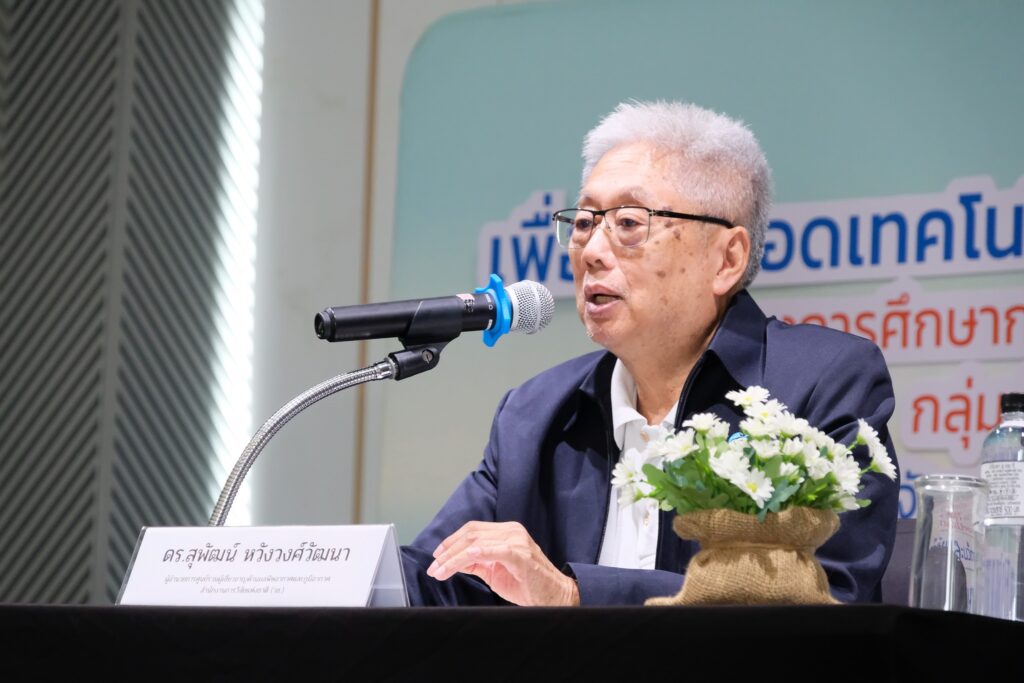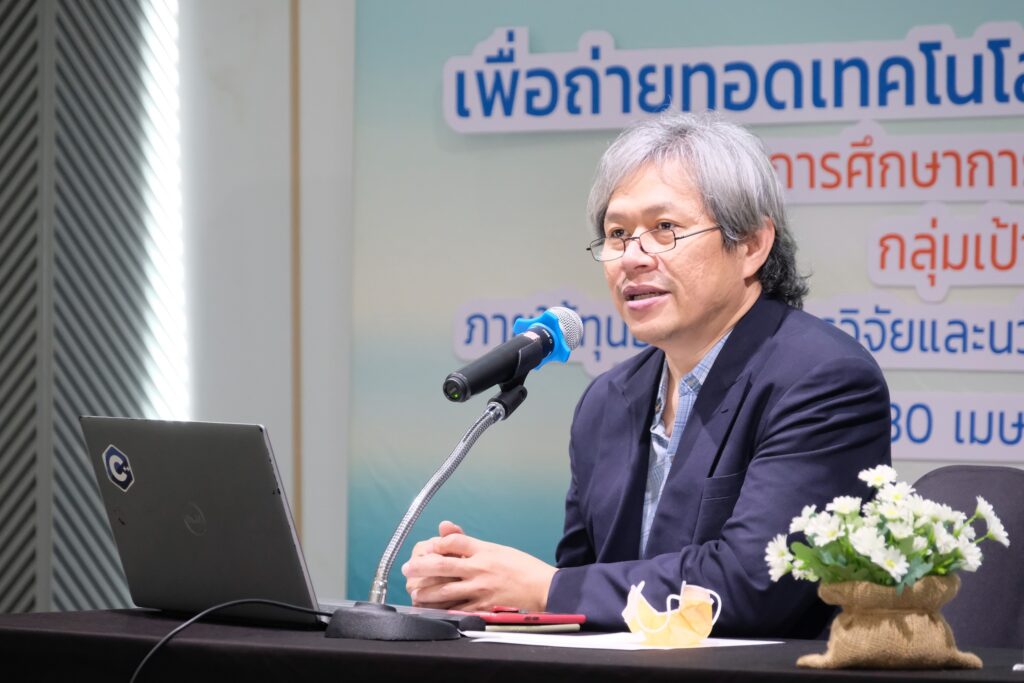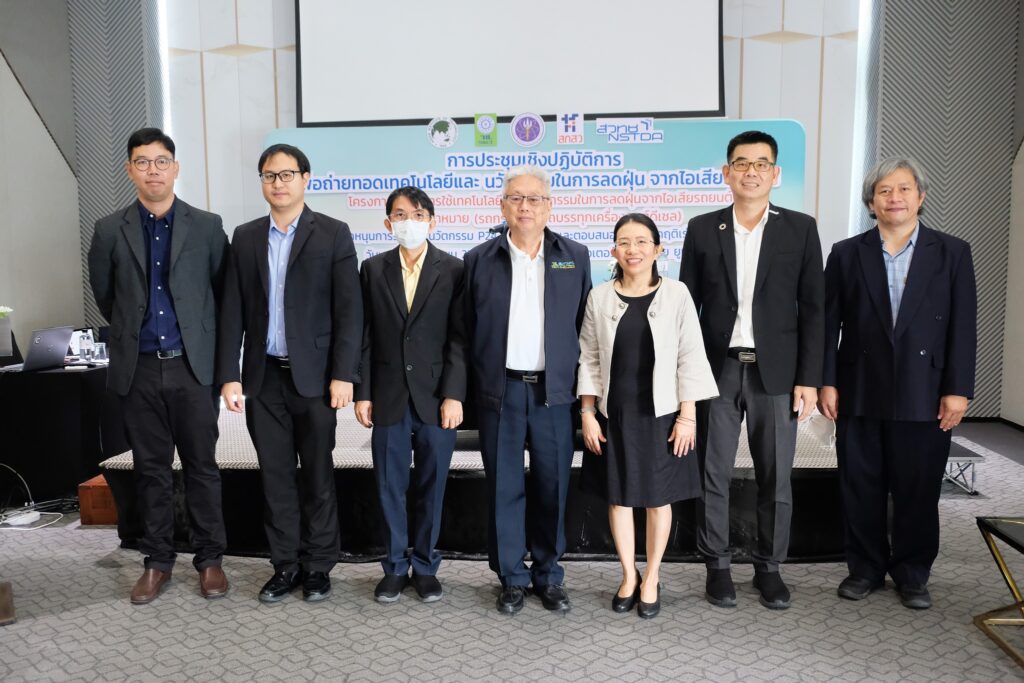On April 30, 2025, at The Quarter Ari by UHG, Bangkok
The National Science and Technology Development Agency (NSTDA), under the Ministry of Higher Education, Science, Research and Innovation (MHESI), through the National Energy Technology Center (ENTEC) and the National Electronics and Computer Technology Center (NECTEC), in collaboration with the Asian Institute of Technology (AIT), the National Research Council of Thailand (NRCT), and Thailand Science Research and Innovation (TSRI), held a workshop to transfer technology and innovation developed under a project focused on reducing PM2.5 dust emissions from targeted vehicles (diesel-powered pickup trucks and freight trucks). The project, funded by NRCT, aimed at addressing urgent national crises.
The event was honored by Dr. Supat Wangwongwatana, Director of the Hub of Talents on Air Pollution and Climate (HTAPC), NRCT, who presided over the opening ceremony, with Dr. Sumittra Charojrochkul, Executive Director of ENTEC, delivering the project background and its significance.
The workshop aimed to disseminate key project outputs, including a computer vision-based vehicle exhaust opacity measurement system, and a data processing, visualization, and management platform to screen and monitor targeted vehicles. These technologies are designed to support effective enforcement of emission control laws and measures, minimize traffic disruption, and address air pollution, especially PM2.5 fine particulate matter, which poses a serious public health threat.
The event was well attended by representatives from key implementation and enforcement agencies responsible for controlling emissions from the transport sector, including the Pollution Control Department, the Department of Land Transport, the Traffic Police Division, the Bangkok Metropolitan Administration (BMA), and other relevant agencies. Experts, researchers, and speakers also participated in the workshop to receive the technology transfer and collaboratively explore strategies for applying the project outcomes to deliver maximum societal benefit.

Dr. Supat Wangwongwatana, Director, Hub of Talents on Air Pollution and Climate – HTAPC, NRCT, stated that tackling PM2.5 pollution is a major challenge for government policymakers. It requires proactive policies and measures to prevent and mitigate the impacts on public health. NRCT supports the use of technology and innovation in addressing PM2.5 issues under the P24 program, which aims to respond to urgent national crises. This includes integrated research and innovation support tailored to major emission sources in different target areas, such as agriculture, forestry, transportation, transboundary pollution, and integrated data systems. In the transportation sector, the urgent focus is on Bangkok and its metropolitan region, where traffic congestion is high. A key strategy is to use technology and innovation to reduce emissions from road transport by developing systems to screen and monitor high-emission vehicles and designing management models tailored to the local PM2.5 levels. Dr. Supat expressed his hope that the project’s outcomes would be implemented by relevant agencies and contribute to the development of more effective legislation and enforcement measures.

Dr. Sumittra Charojrochkul, Executive Director of ENTEC, NSTDA, emphasized that the growing economic activity has led to PM2.5 concentrations exceeding standard limits in many regions of Thailand, including Bangkok and its vicinity, where traffic is heavy. Diesel-engine vehicles are a primary source of black smoke and PM2.5 emissions, which also contain higher concentrations of carcinogens compared to other sources. The project leverages advancements in machine learning, artificial intelligence (AI), and computer vision technologies, along with existing CCTV traffic control infrastructure. These technologies were used to develop the project’s output: a computer vision-based opacity measurement system, a data processing and visualization platform to screen and monitor high-emission vehicles, and a dashboard to display transport sector emissions. These tools will enhance the effectiveness of emission control enforcement and reduce traffic disruption.
This technology and innovation transfer event showcased ENTEC’s key role in developing modern tools using AI and computer vision to detect and track black smoke-emitting vehicles. These tools support efforts to tackle the PM2.5 pollution problem that affects public health, improve the effectiveness of legal enforcement and control measures, minimize traffic impacts, and ultimately contribute to better environmental policies and improved quality of life for the public.






